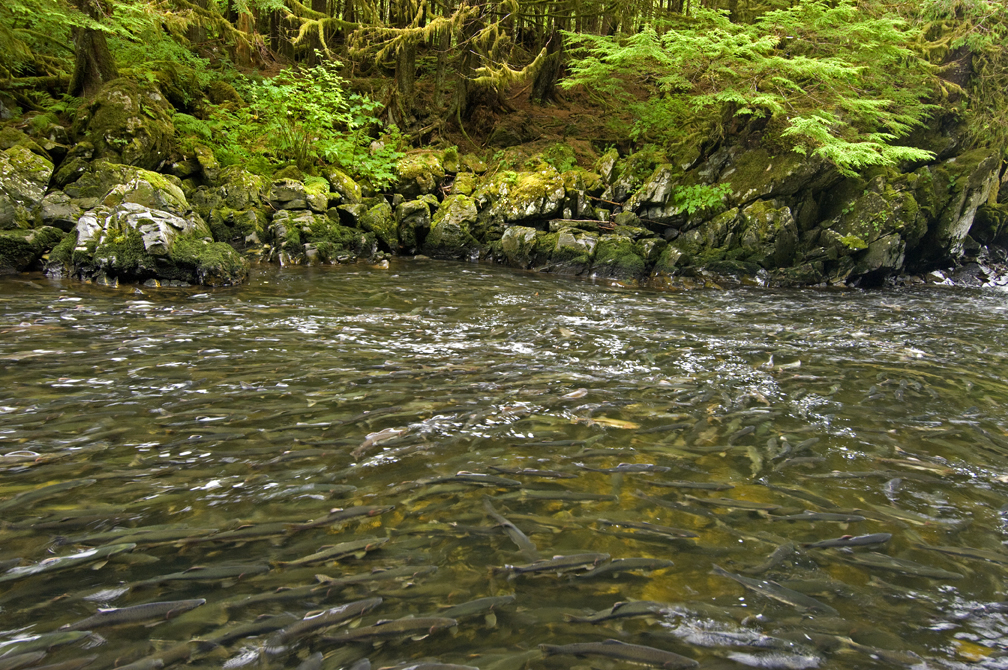A few years ago I visited Southeast Alaska and saw more salmon than I thought I'd ever see in my entire life. The question: will they be there for our next generation?
Southeast Alaska is one of the last places in the United States where wild salmon still thrive. A place where a healthy, fully functioning ecosystem churns out tens of millions of these fish every year, employing more than 7,300 people in fishing, processing and guiding jobs. A place where salmon underpin the culture and lifestyles of people with ancestral ties to the region dating back 10,000 years or more. It's a cold and mossy rainforest of giant cedar, spruce and hemlock trees with nearly 18,000 miles of salmon-filled rivers.
Most of this place is designated the Tongass National Forest. This 17-million-acre forest covers most of Southeast Alaska and functions as a huge nursery for five species of wild Pacific salmon. At its most basic level, the Tongass is a salmon forest.

Salmon Forest - Photo: Amy Gulick
I and more than 230 other scientists will be calling on Congress to protect Tongass salmon. The vehicle is a proposal to Congress to help protect the 77 most high-value watersheds for salmon that remain open to development. These 77 watersheds comprise nearly 2 million rainforest acres. The new effort is called the Tongass 77.
Scientists, agency officials, fishermen and conservationists have determined that these are "the best of the best" when it comes to producing salmon. These are high-yield waterways that year after year return high numbers of spawning salmon. They're worth protecting.
By that I mean managing them for salmon production as priority number one. This doesn't mean they're locked up and nothing else can occur from a jobs perspective. Under this proposal, income-generating activities ranging from mining to hydropower can happen if they're consistent with the top management goal of conserving the natural habitat for wild salmon.
If Tongass salmon are so healthy and rich in number, why do they need protection measures like Tongass 77? The history of salmon in the rest of the Pacific Coast, and in so many other parts of the world, tells the story. In states south of Canada, like California, Oregon and Washington, Pacific salmon no longer spawn in nearly half of their original spawning areas. A toxic mix of habitat loss from urban sprawl, agricultural run-off, dams, logging, privatization, and other stamps of human behavior have decimated salmon runs across the Pacific Northwest.
Alaska, and specifically the Tongass which produces one-third of the state's total salmon harvest, is the country's last bastion of healthy salmon country. And even in the Last Frontier, a slew of threats loom over Tongass salmon, including land privatization proposals, logging, mineral development and climate change. The Tongass 77, if enacted by Congress, would help permanently protect at the watershed scale -- meaning from ridge top to shoreline -- a large block of what's left of the country's wild salmon habitat. It would help ensure the long-term viability of these fish.
The Tongass 77 is a pro-active conservation strategy that makes sense for Southeast Alaska. Google the words Tongass and American Salmon Forest to find out how to get involved. Or go to americansalmonforest.org and sign on.
